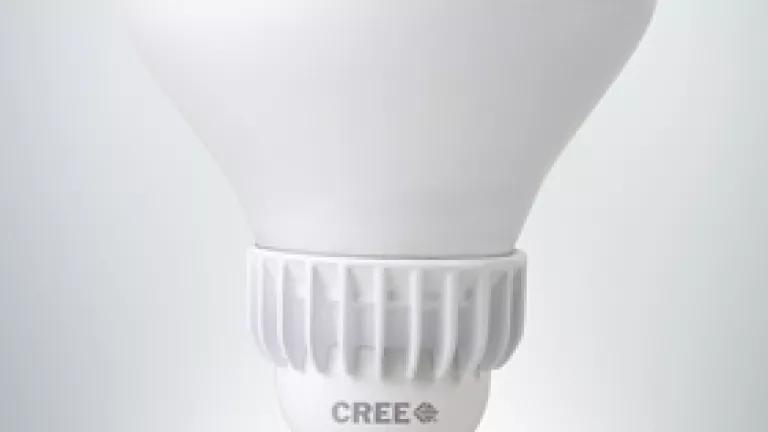
Spring is here at last, bringing relief from a seemingly endless winter and the painfully high energy bills that went along with it. Not needing to turn on the heat due to warmer weather is a surefire way to bring down your energy costs. Another simple fix you might want to try this spring is upgrading your light bulbs. It’s probably one of the easiest things you can do to make your home more energy efficient, and reduce your utility bill each month for years to come. Your savings could add up to more than $100 a year—and really, it’s as easy as screwing in a light bulb.
There are dozens of varieties of efficient bulbs on store shelves today, and they’re better and cheaper than ever. Super-efficient LED bulbs, with their high-quality light and long lifespan, appear to be poised for a dramatic takeoff as their prices continue to fall. A single LED bulb can save about $125 in energy costs over its lifetime. Goldman Sachs is so bullish on the bulbs that in a recent report, analysts predicted that more than 6 out of every 10 sockets in the country would be fitted with LEDs by 2025, reducing electricity demand by as much as 11 percent. Hard numbers are difficult to predict, but it is clear that LEDs are on track to significantly reduce the amount of energy we use, cutting utility bills as well as carbon and other harmful pollution from coal-fired power plants.
LEDs started out as a niche product. The tiny, powerful lights transformed camping, for one thing. I remember how we used to wear big headlamps powered by heavy packs of two or four D-cell batteries, and had to carry spare bulbs to boot. Now lightweight, brighter, long-lasting LED headlamps are standard camping gear. I recently returned from rural Baja California, Mexico, where we used solar-powered LED lanterns that weighed practically nothing, and they lit up a whole tent with light bright enough to read by.
As the bulbs continue to get better and cheaper—LEDs are brighter and even more efficient than CFL bulbs--it’s only a matter of time before they become as familiar as Edison’s incandescent. Consumer Reports, in a recent test of the latest crop of LEDs, said: “So far, so good.... All of the newer, cheaper bulbs were as bright as or brighter than claimed, and the light color matched what was claimed…The incandescent bulb’s days are numbered.”
Eighteen percent of all the electricity we use in this country is consumed by light bulbs. When we start to swap out the 3 billion inefficient bulbs currently in our sockets for newer LEDs, which use about 75 percent less energy, energy use will drop on a national scale. Better bulbs, once they’re in widespread use, are expected to save as much electricity as 30 large coal-fired power plants generate, and $13 billion in energy bills every year. That’s a huge savings, not just in electricity but in health costs saved from reducing pollution.
The production of better light bulbs has been driven, in large part, by federal energy efficiency standards, which have a clear track record of spurring product improvements. Refrigerators, formerly notorious energy hogs, now use 75 percent less energy than they did in the 1970s, and clothes washers and dishwashers have seen similar efficiency gains. Scores of appliances have become dramatically more efficient over the past few decades, and will continue to improve with each new set of standards. The current suite of federal efficiency standards for appliances, in fact, will save consumers an astonishing $1.1 trillion in net energy costs by 2035.
Light bulbs alone have a huge potential for energy savings. As LEDs continue to become more efficient, and used everywhere--not just in homes and offices but in streetlights, store windows, signs, factories—we could eventually save as much as $30 billion in energy costs each year, according to the DOE.
The next time a light bulb goes off, consider replacing it with an LED. You’ll save money, and help reduce the burden of power plant pollution. Stick to Energy Star-rated brands for the best quality. See NRDC’s Light Bulb Guide, and listen to our energy efficiency expert Noah Horowitz on NPR, for more buying tips.
[This post is part of our Wasteland series, featuring people, towns, businesses and industries that are finding innovative ways to cut waste, boost efficiency and save money, time and valuable resources.]



